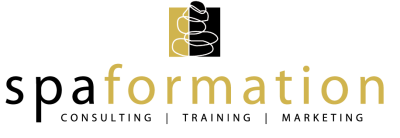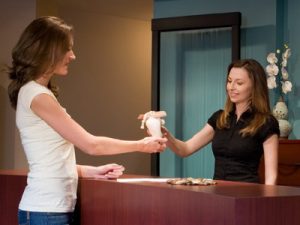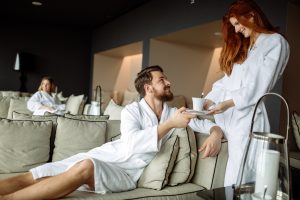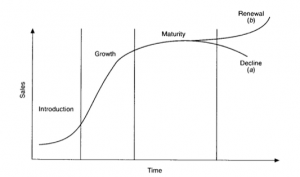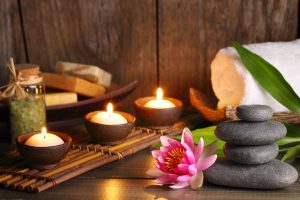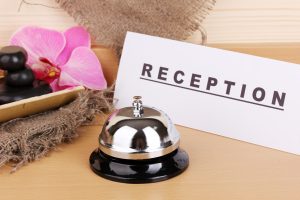
So you want to own a spa?
Congratulations! It’s a wonderful dream and goal. It is also an expensive, time-consuming endeavour that will require all the business acumen, talent, creativity, and determination that you have.
In the early stages of deciding to build or buy a spa, it is vital that time is taken for careful planning and homework. All of the greatest ideas conceived will—at some point—still require the careful, and sometimes painful, process of putting ideas and numbers on paper.
So why must you do this? To can give your dream as much opportunity to succeed as possible.
Starting Up Means Planning and Homework
I have identified seven key planning and analysis tasks to help you in this journey. They cover the fundamental issues that should be addressed before you start to invest your hard-earned money.
The process itself of building a development plan and financial forecasts is a terrific learning tool. It will either prepare you to go into the spa business, or to realize what key areas you need to watch for to be able to operate at maximum potential.
Not only will this aid in the financial planning process, but it will assist you in closely defining the goals of the spa business and thus help create a clear vision to follow for the whole team who will join in making the dream a reality.
Performing mindful analysis in these seven key areas will drastically affect the decision making process, and may well determine whether or not you should go ahead with your dream as you imagine it today.
Up-to-date and accurate figures are critical in order for the spa to respond to the business needs. Even more importantly, they are the guide that will help you reasonably predict what may happen in the future and thus help in determine the path you will take to lead the company to long-term financial health.
The Seven Key Planning Tasks
- Define the ‘Vision’ and experience?
- Determine who the guests/customers will be.
- Determine where the salon will be located.
- Estimate the start-up costs.
- Develop a Proforma.
- Develop a sales and marketing strategy and plan.
- Develop an operations plan.
All of these items require careful thought and consideration. If time is not taken to make these decisions, the ability to forecast the success of the business will be limited.
1. Defining the ‘Vision’ for your salon. What kind of experience are you looking to create for your guest?
Are you creating a day spa, amenity spa? Is it holistic, beauty, or somewhere in between?
Defining the experience is important as it will impact who the spa is going to attract and what kind of physical space and equipment the spa will require.
Perhaps the salon will have a theme. Will it be ‘east meets west’, a salon and spa combined or focused on being a green spa? When this choice is made, it will assist in determining all of the other choices to be made that will affect the guest experience: the things they see and touch, the treatments, and the details that will evoke feelings and emotions. This will create a unique experience that can differentiate the salon from the competitors.
If you cannot differentiate yourself from your competitors—whether physically, by your treatments, or your service—then why will the clients choose your spa over any other spa?
2. Determining who the guests/customers will be.
Take a close look around and see where your guests live. Will your salon be a neighbourhood salon looking to attract the local residents? Will it be a destination spa for the world’s rich and famous on the coast of some tropical land? You need to know or—at the very least—try to predict the demographics of your guests.
Demographics are:
- Socioeconomic groups, characterized by age, income, sex, education, occupation, etc., that comprise a market niche.
- The characteristics of human populations and population segments, especially when used to identify consumer markets.
One you have specifically identify who your guests are, you can then determine where they are and then, most importantly, how to get to them. This is essential for determining the marketing plan.
Depending on the experience of the development team and target guest, the next stage in preparation can begin. These two factors: the guest and the experience, will help in planning the physical space of the spa.
3. Determining where the spa will be located, and planning the space.
Spa location
First and foremost: location, location, location. It is an old adage but has always had great truth to it. By finding a fit combining the spa experience with the target guests, specific target locations can now be considered. Where can the salon be located to achieve the greatest possibility for success? What is the population? How much competition is in the area?
Spa Size
The following factors must be considered:
- How many treatment rooms or chairs will be needed?
- What will happen in each treatment room, what is its purpose?
- What common areas will be needed? How big will they need to be?
- What are the space requirements for reception, storage, and staff areas?
- How much total space will be needed to deliver the experience you have planned for your guests?
Location and space options
Once you determine how much total space is required, you need to determine how the space will be created: Is it better to build, to buy, or to rent? Can it grow and expand if needed?
These questions are interrelated, as those factors play key roles in the cost of the project and the ability to meet the needs of the guests you wish to attract.
These are the difficult decisions that will be faced, and they will need to be resolved as you collect all the information necessary to determine whether or not your dream is feasible.
4. Estimating Start-up Costs
Many different costs will be required to get the spa up and running. Everything from development costs, construction costs, furnishing and fixtures, and pre-opening costs (including training and marketing) will all need to be considered.
Calculating all of these costs is the first step to deciding whether the business will viable or not. It is not uncommon to see ranges in start-up costs of anywhere from $200.00 to $550.00 per square foot.
5. Developing a Proforma
This is the most often forgotten, or neglected, area of spa development. Many future owners and operators fail to invest the time and energy required to complete a thorough proforma. It is easy to fall in love with the idea of creating a new spa. However it is crucial to look at some realistic numbers to determine if your concept will make a profit.
Proforma means ‘for form’s sake’. So, for this purpose, it is giving form to the salon project before it exists. It is the first close look at a rough estimated budget. Through a combination of knowledge, experience, and advice, an estimate will be generated. This estimate will show what revenue the spa can realistically achieve, and what will be the proportionate share of the expenses.
Labour is—and always will be—the single greatest expense, as the salon experience is generally a one-on-one personal practice. The planned compensation structure will be critical. Learn what salons of a similar size and scope are operating at.
Be balanced and realistic in your estimates. Good decision making here will serve the spa well.
6. Developing a Sales & Marketing Plan
Sales
How is the spa going to be sold? What are the key messages the team will convey to the potential guests in hoping to entice them to visit the spa? The training of the team is essential. They will need to educate the consumers about why they should choose your spa rather than one of the multitude of others. Will you be focusing on local business or corporate business? What is your sales strategy?
Marketing
Your marketing plan must include the production of both physical marketing collateral (brochures, business cards, and signage) and electronic marketing content (website, social media, e-newsletters, pictures, and videos). Public relations and strategic alliances are also wonderful advocates of the spa business and will deliver results for your spa. Build a plan for customer awareness before the spa is open. You need to have guests coming to your door the first day it opens!
For a new spa operation, the amount of capital investment in marketing will be greater at the beginning in order to create awareness in the spa-goer marketplace, but it should become more efficient and economical as time passes. Never look too closely at this expense line as a place to cut costs. It will always be the lifeblood of the business, as a salon can never have ‘too many’ clients!
7. Developing a Spa Operations Plan
Now your salon has been created on paper, but services still have to be rendered day after day. Investing your time analyzing all the smaller costs required to deliver the desired experience to the guest will have long term benefits to the spa operating at maximum efficiency, both from a service and cost perspective.
In Summary
By examining each one of these seven keys areas, you will have information to help you make your business decisions. What you ultimately decide to do may not match your initial vision, but you will at least be taking an informed approach to starting up your salon.
In the end, all this careful planning and homework will not guarantee you success, but without it you will be just hoping that your great idea turns out as wonderfully as you had imagined.
Need helping starting your salon? Contact Spaformation : [email protected]
